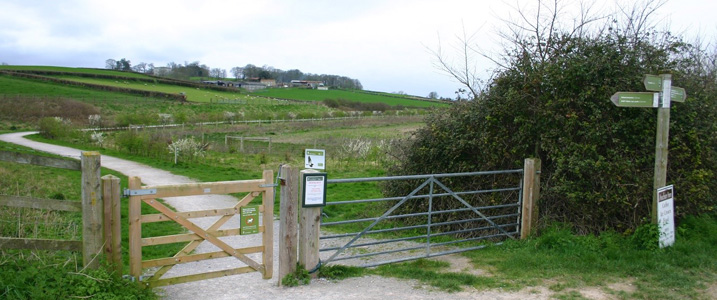Combwich Access Point
Welcome to Steart Marshes! Learn about the science going on here...
Here is the view from your vantage point, looking northwest into the Otterhampton coastal marsh with the Parrett estuary behind you and the village of Combwich to your left. Otterhampton Marsh is a brackish wetland, where both salt and freshwater mix. It is a particularly good spot for seeing a wide range of wading birds and raptors (such as merlin, peregrine falcon and marsh harrier). Behind you on the Parrett estuary, look out for little egret, avocets, oystercatchers and even the odd grey plover!

KEY FACT 1: Steart Marshes cover almost 500 hectares and comprise three types of wetland habitats of differing sizes.
The largest is the saltmarsh to the north, covering 320 hectares; next is the freshwater Stockland Marsh, covering 80 hectares, followed by the brackish Otterhampton Marsh just to the northwest of where you’re standing, covering 50 hectares.
To fully appreciate the transformation in the landscape here, take a look at these two artistic impressions of the Steart Peninsula before and after the sea wall was breached in 2014. Otterhampton Marsh is to the bottom left in both photographs.

KEY FACT 2: Plenty of rare bird species have been seen across all three wetland types at Steart Marshes, including pallid harrier, purple heron, spoonbill, water pipit and Lapland bunting.
Avocets bred successfully on Otterhampton Marsh for the first time ever this year (2017):

Science behind fish habitat establishment
Research is underway here to assess the quality of fish habitat within the new man-made saltmarsh just to the north of where you are standing. Saltmarshes provide crucial nursery habitats for a number of commercially important fish species, and it is important for us to understand whether fish can spawn in a man-made saltmarsh as well as they would in a fully natural saltmarsh.

KEY FACT 3: Fish species now inhabiting the new saltmarsh include seabass, whiting, mullet, gobies and European eel. Gobies in particular are superabundant here.
Thomas uses “ear stones” (otoliths) located within the heads of most fish to calculate their growth rates over time. Growth rate is a good indicator of food availability and habitat quality. He also analyses stomach contents to identify diet. Differences in fish diets can also change the chemical composition of their muscle tissue, so analysis of these chemical signals can be used to measure an individual’s dependence on a particular habitat (e.g. natural versus created). The photograph below shows the type of habitat in the intertidal area that can host developing fish fry:

KEY FACT 4: The latin name of the European seabass is Dicentrarchus labrax and it can grow to a maximum length of 1m and weigh up to 12kg.
KEY FACT 5: Species monitoring and ecological surveys are a regular activity across Steart Marshes, conducted by WWT staff, volunteers and local ecologists.
Bird monitoring goes on all year, but protected species monitoring is more seasonal e.g. for great crested newts, water voles, eels and butterflies.
-
In this section
- Learning at Steart Marshes
- Combwich Access Point